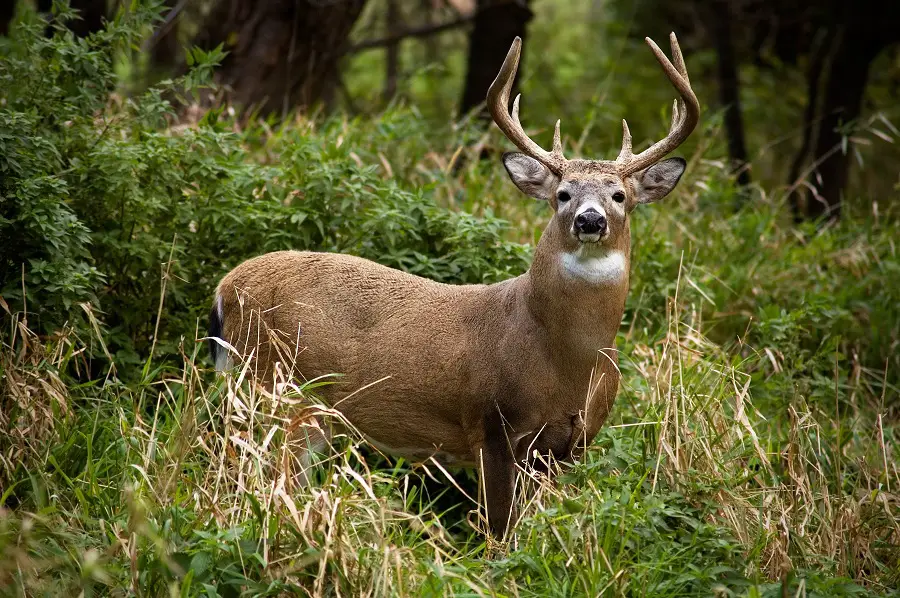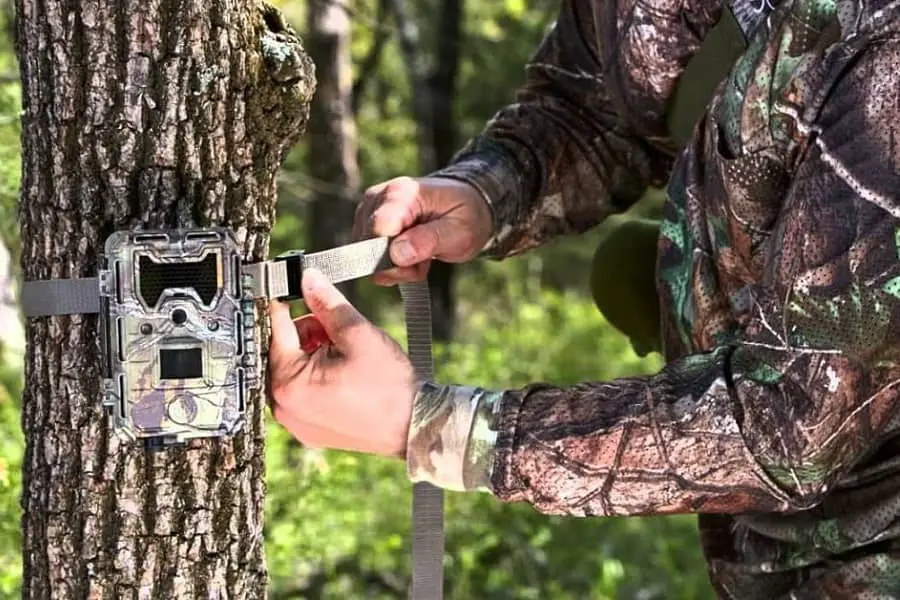Deer hunting is challenging but rewarding, especially when you know how to go about the fundamental requirements.
Before you rush to the store or get your hunting training under the belt, read through this article to properly prepare for your exciting decision.
You get to understand where to hunt deer and what you will need for a hunting excursion.
We cover all the beginner details, equipment, and information you need to start your new sport.
Why is Deer Hunting Popular?
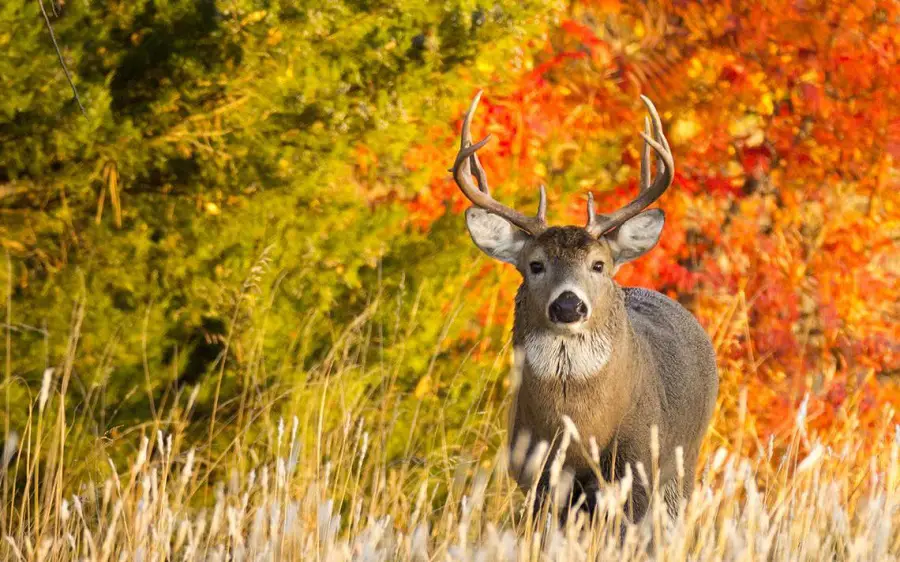
Deer hunting is a popular sport throughout the U.S. and most other countries where deer populations are abundant.
Deer hunting is popular for many reasons, including:
- Abundance of deer
- Supporting the environment through culling deer numbers
- Healthy meat
- Excellent outdoor experience
- Fun
Deer are common, so hunting whitetail or mule deer is seen as a popular pastime. Some hunters believe that deer hunting maintains population numbers, which is an excellent reason to keep their numbers in check.
Keeping deer numbers under control also helps prevent starvation when the land cannot support their food requirements, preventing them from starvation.
Another reason why people enjoy hunting deer is for their excellent meat. Deer meat is wholesome, healthy, and organic. Deer meat is also regarded as more nutritious than domestic red animal meat as it contains less fat.
Deer hunting allows hunters to get into the outdoors, enjoy the fresh air away from populated areas and appreciate nature.
Mostly, hunters enjoy deer hunting because it is a fun activity with friends or family that gives them a healthy mental break from daily life.
Legality And Permits
If you plan to go deer hunting in the U.S., then you need a valid hunting license. Hunting license requirements differ across States, but these are some of the details you’ll need to obtain a legal deer hunting license:
- Typically, deer hunting licenses are only granted to those people who are older than twelve years. Some states grant permits to people as young as ten years, but anyone underage must have adult supervision when deer hunting.
- You will have to provide some form of proof that you are qualified for deer hunting. In other words, you will need to produce a hunter’s safety card to confirm that you have completed a Hunter’s Education Course.
- You must produce a valid identification document when applying for a deer hunting license.
- If you plan to hunt deer with a firearm, you must prove that this weapon is legally licensed. You will also have to produce your social security number with any deer hunting license application. The State may refuse your application if you are not up to date with maintenance support payment.
Deer hunting licenses differ between States.
When is Deer Season?
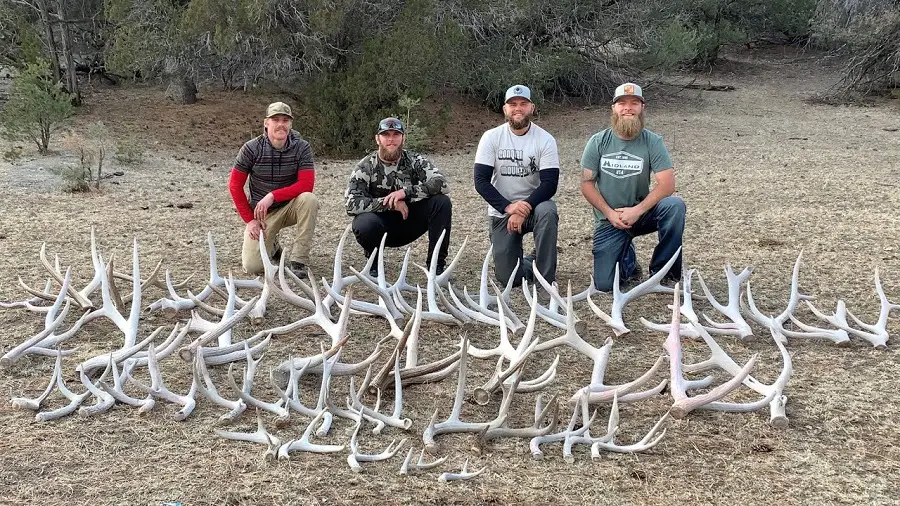
The deer hunting season ranges from September 15 to December 15 in most States.
Deer hunting periods are also explicitly set for archery, muzzleloaders, firearms, and youth deer weekends.
You can check for your specific deer hunting dates here and at this link to see when the State allows you to plan your deer hunting excursion.
Types of Deer?
There are many types of deer in North America, with the whitetail deer being the oldest. Then, you find close relatives like the Blacktail or Mule deer.
Other close relatives include the elk, Caribou, and moose. Because there are so many deer sub-species (58), this section focuses on six of the more familiar deer types in the U.S.
1. Whitetail Deer
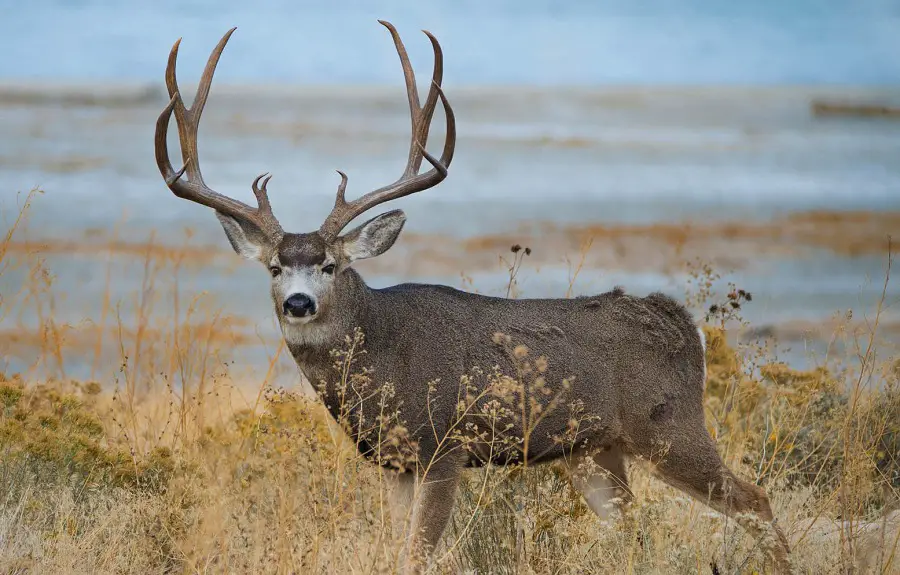
The Whitetail is known as such because it lifts its tail to expose the white underside when under threat. Lifting their tails is a warning to predators and the rest of the herd that danger is near.
Whitetails have a distinct red-brown coat during springtime, which transforms to a dully greyish-brown shade during autumn and winter months to blend in with the environment.
These bucks grow to between 37 and 87” at shoulder height. Their weights reach between 150 and 300 pounds, with variations depending on location.
2. Mule or Blacktail Deer
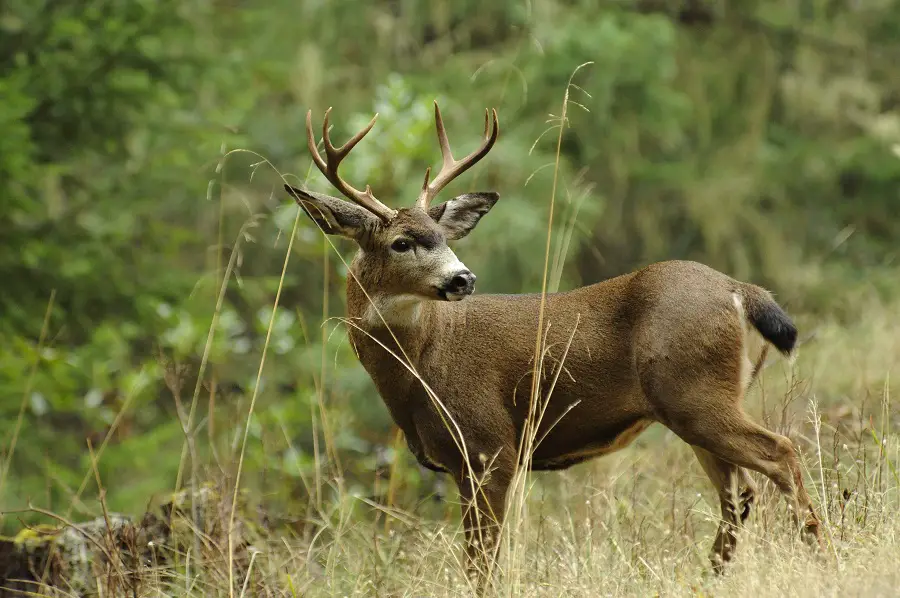
The mule deer has big ears resembling those of a mule. There are two sub-species of blacktail deer which originate from the mule deer. One is the Columbian blacktail deer, and the other is the Sitka deer.
The mating season of the Blacktail deer only lasts for a few days, beginning during the fall months. During this period, the males become more aggressive as they vie for breeding rights. If the males are unsuccessful in impregnating does during this initial part of the breeding cycle, they will try the following month again.
Blacktail deer grow to approximately 31 to 42″ at shoulder height and weigh anything between 120 to 330 pounds. Size, weight, and appearance differ moderately between these subspecies and across regions.
3. Caribou
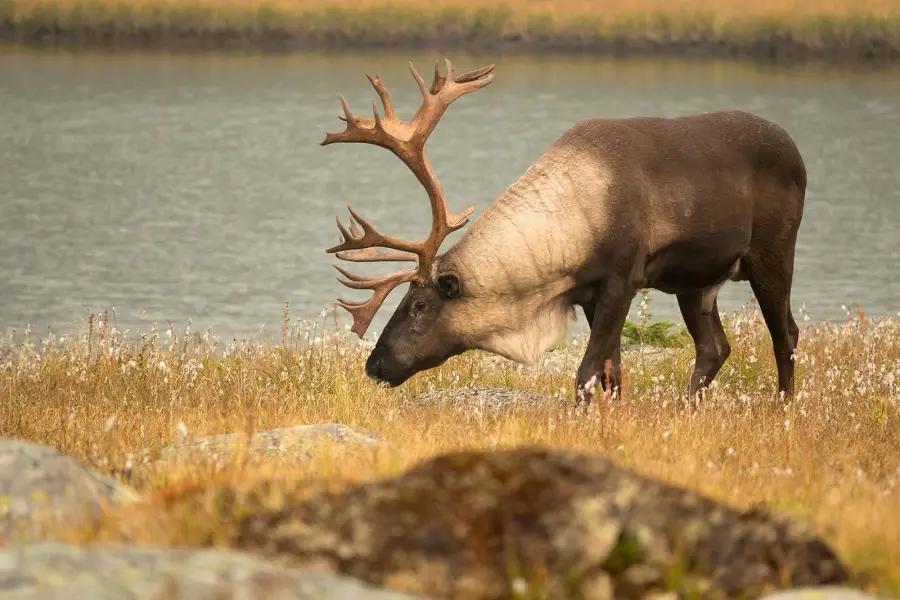
The Caribou or Reindeer are renowned for their magnificent antlers and are much larger than the Whitetail or Mule deer.
Caribou form an integral element of Inuit culture and other indigenous cultures as a source of food, clothing, shelter, transport, and other uses. These animals grow to heights of between 5.3 and 6.7 feet and weigh between 180 and 400 pounds.
4. Moose

Moose are even bigger than the Caribou, but their antlers resemble the palm of a hand and fingers. Unlike deer that typically gather in herds, the Caribou live a solitary life.
These animals also migrate through the seasons to find food supplies, avoid predation and warmer climates. Moose are excellent swimmers and, although well-adapted to cold regions, will seek warmer areas when feasible.
Moose reach heights of 7.0 to 10 feet at the shoulder and can weigh anything between 440 and 1500 pounds.
5. Brocket deer

Brocket Deer are not as prevalent in the U.S. and tend to be more active at night, making them more challenging prey for hunters. Brocket is the French word for a young stag that has not yet grown antlers because its horns are small and spikey.
Brocket deer mate for life and are more sexually active during fall, although they do not stick to specific times of the year. These deer are also timid and delicate, living in forested areas to protect themselves from predation.
These deer are small and only grow to between 24 and 57″ and weigh between 18 and 106 pounds.
6. Elk

Elk are much bigger than the whitetail and mule deer but smaller than the moose.
The males of this species use their impressive antlers for sparring during the mating season but shed these once the season is over. Male elk have a voluminous bugling vocalization during mating season, which they use to attract females from five miles away and dominate the competition.
Elk grow to between 7 and 9 feet at the shoulder and weigh in at 500 to 730 pounds.
Where Will I Find Deer to Hunt?

Whitetail deer are the most prevalent throughout Texas, where populations number over four million. Hunters will also find this common deer on the eastern side of the Rocky Mountains and in the northern regions of the Canadian Rockies and Mexico.
The Mule or Blacktail deer are found in the Rocky Mountains on the western side of the Great Plains.
The Columbian blacktail deer lives along the West Coast in Northern California right through to British Columbia. You will find the Sitka deer living along the British Columbia coast through to Alaska and Kodiak Island.
Caribou or Reindeer populate the cold northern regions of the U.S. from Alaska to the Yukon, Northwest Territories, and the southern areas of the Canadian Rockies. These animals are indigenous to the tundra and taiga regions and migrate to the boreal woodlands during warmer months.
Moose prefer the forests of the Northern Hemisphere, where temperatures are more moderate. These animals also live in sub-arctic regions throughout New England, Canada, and Alaska. More moose are living in Maine than in any other part of the area.
You will find brockets living in Trinidad, Central, and South America, and the Yucatán Peninsula. These tiny deer prefer forest life and warmer climates but are difficult prey to hunt as they are primarily nocturnal creatures.
Hunters will find elk in the following regions:
- Washington
- Oregon
- California
- Montana
- Idaho
- Wyoming
- Nevada
- Colorado
- Utah
- Arizona
- New Mexico (Yellowstone National Park, Wyoming National Elk Refuge)
Best Weapons to Hunt Deer?

When doing any activity, the right tools or equipment help simplify the job. The same concept applies to hunting. Get yourself a decent weapon, and you’re more likely to enjoy the experience and deliver a clean kill.
Browse through this brief list of the best weapons to use when hunting Whitetail or Blacktail deer. Always check what firearms and other weapons are permissible in your State when hunting these animals.
1. Beanfield Sniper: Remington Sendero SF II
This weapon is heavy as it has a 26” barrel. The Beanfield has an HS rigid precision stock, a scope. Hunters can choose from a 7 mm Rem. Mag., .300 Win. Mag. or the .300 Rem. Ultramag.
2. Timber Classic: Marlin 336C
This lever gun has a low scope magnification, otherwise known as a peep sight, which is perfect for hunting from a small deer blind or in dark wooded areas.
The recoil is moderate. This weapon also delivers the ideal balance between weight, portability, firepower, and handling and is a powerful deer hunting weapon.
3. Alpine Shooter: Sako Finnlight
The Sako Finnlight has won awards in the past for being reliable and accurate. Winning an award is a magnificent achievement for a rifle with a thin barrel, as it seldom happens.
This rifle is also lightweight at six pounds for easy portability. It has a pleasantly mild recoil and is available in several calibers.
4. All-Purpose All-Star: Weatherby Vanguard Series 2
The Weatherby Vanguard Series 2 is a bolt gun that is ideal for shooting big game. This weapon has a better stock and trigger than previous models.
It also has three safety positions, and the company has made improvements on the stock and trigger. In terms of price, quality, accuracy, and handling, this is an excellent piece of workmanship that you can purchase with confidence.
You should also learn more about rifle accessories like shotgun cases, hunting knives, and more to get yourself adequately kitted out for the next hunting season.
Essential Deer Hunting Gear

When you go deer hunting, you should equip yourself with some essential items. These items will help ensure a pleasant deer hunting experience, comfort, and protection:
- Rifle. muzzleloader and ammo or bow/crossbow and arrows
- Rifle or bow hunting case
- Riflescope
- Binoculars
- Rangefinder
- Lens cleaner
- Camo day hunting pack
- Face mask
- Tree stand and safety harness or ground blind
- Hunting knife
- A quick-drying travel towel
- LED flashlight
- Trail camera (optional)
- Scent killer
- Water and water bottle
- Odorless bug spray
- Field wipes
- Portable charger
- Hunting boots
- Camouflage hunting clothing
- Raingear
Tree Stand vs. Ground Blinds
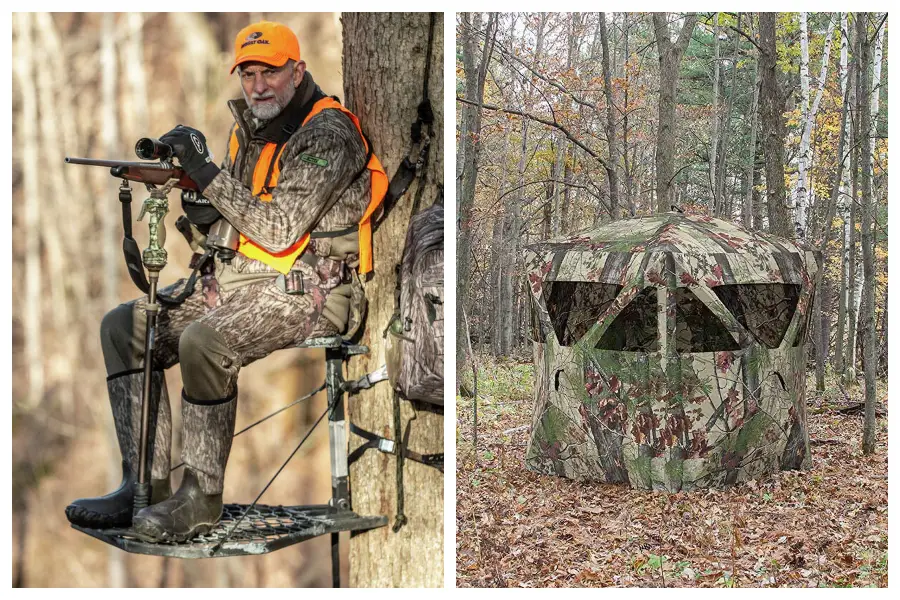
Hunters argue about which game is better to hunt, whether guns are better than bows, or which knives are best. It is not surprising that they also argue about which blinds are better.
Here’s what we know about tree stands and ground blinds for deer hunting.
1. Concealment
Ground blinds offer incredible concealment and comfort. Erect a ground blind while deer hunting, and you become invisible to your prey. Ground blinds are also comfortable during inclement weather and offer loads of protection.
Tree stands place you above wild game, which seldom looks upwards (if ever), which gives you an excellent advantage.
Tree stands and ground blinds have their limitations in being able to spot prey, depending on where you erect this equipment.
2. Mobility
Ground blinds and tree stands are both relatively portable. However, hang-on stands are better than ladder stands in terms of portability. Tree stands are typically more restrictive for moving between hunting locations.
3. Ease of taking shots
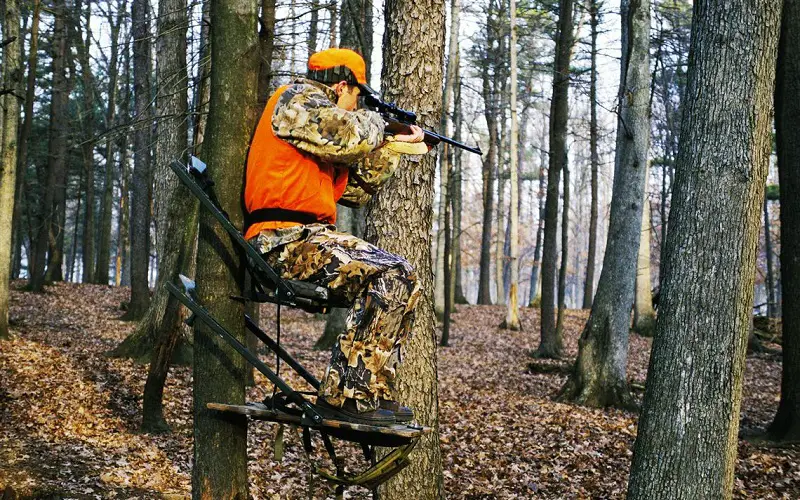
If you choose a ground blind, you must take your shot from specific windows and keep the others closed. You can open more than one window, but your risks of detection increase. Using only one window limits your view and often your aim.
If you use a tree stand, you will likely have to trim the foliage to prevent branches from restricting your view. Other than branches, the tree stand has few limitations in viewing your prey when hunting deer.
4. Cost
Tree stands typically cost more than ground blinds, but you can purchase a tree stand for approximately $100. This price includes climbing sticks for a hang-on stand.
You can find a suitable ground blind for under $50, but these cheaper stands provide little space to move, and they have low ceilings.
5. Comfort
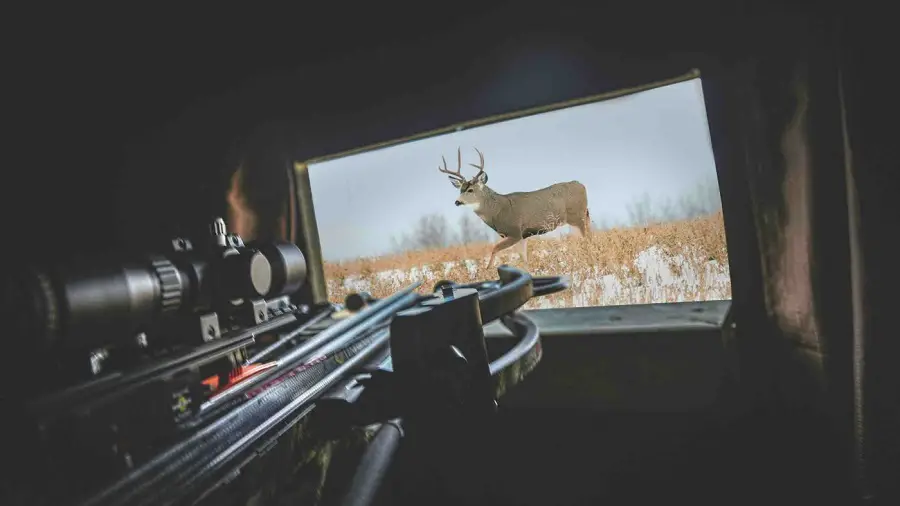
If you buy a more expensive ground blind, you will have plenty of room to move and store your gear. Larger, more expensive ground blinds also offer better protection from poor weather conditions.
Tree stands are far less comfortable options for deer hunting despite improvements over the years. If comfort means more to you than the other factors, then the ground blind wins, hands down.
Conclusion
After reading through the foundations of deer hunting, do you still think that you want to pursue this sport?
If so, then plan ahead for the next hunting season because you now have all the basics.
Once you have these fundamentals sorted, you can book your first hunt.
References:


